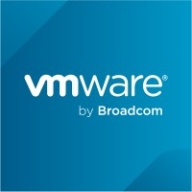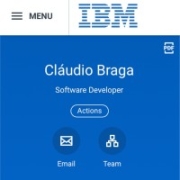

Apptio One and VMWare Tanzu CloudHealth compete in IT financial efficiency and cloud resource management, respectively. VMWare Tanzu CloudHealth appears to have the upper hand due to its multi-cloud capabilities.
Features: Apptio One provides cost transparency, resource planning, and budget forecasting. VMWare Tanzu CloudHealth offers multi-cloud cost optimization, governance policies, and cloud usage analytics.
Ease of Deployment and Customer Service: Apptio One offers a streamlined deployment model with strong support services for large enterprises. VMWare Tanzu CloudHealth provides a flexible deployment model compatible with various cloud providers.
Pricing and ROI: Apptio One requires substantial initial setup costs but delivers significant ROI through improved financial strategies. VMWare Tanzu CloudHealth has moderate setup costs, with ROI driven by enhancing cloud cost efficiency.
| Product | Market Share (%) |
|---|---|
| Apptio One | 4.9% |
| VMWare Tanzu CloudHealth | 4.3% |
| Other | 90.8% |


| Company Size | Count |
|---|---|
| Small Business | 4 |
| Midsize Enterprise | 2 |
| Large Enterprise | 5 |
ApptioOne unifies financial and operational data into a unified model built on the industry-standard taxonomy of cost categorization. Utilizing sophisticated allocation rules along with focused metrics and KPIs, we enable organizations to answer the most strategic questions about investments and accelerate budgeting and forecasting processes. By explaining investments and variance to plan more quickly to constituencies and executive management, organizations can uncover opportunities to optimize cost structures, reduce risk, and accelerate growth.
VMware Tanzu CloudHealth, formerly known as VMware Aria Cost Powered by CloudHealth, is a specialized cloud management platform tailored for Multi-Cloud Cost Optimization. It offers comprehensive visibility into cloud spending across various providers, enabling users to identify areas for optimization and make informed resource allocation decisions. With features like reserved instance management, resource rightsizing, and automated cost governance policies, it facilitates financial management for optimal cost efficiency. Beyond cost optimization, Tanzu CloudHealth enhances cloud operations through workload optimization and governance automation, catering to multi-cloud environments encompassing public, private, and hybrid clouds. Its primary focus remains on enabling organizations to effectively manage and reduce cloud expenditures while supporting operations across diverse cloud platforms.
We monitor all Cloud Cost Management reviews to prevent fraudulent reviews and keep review quality high. We do not post reviews by company employees or direct competitors. We validate each review for authenticity via cross-reference with LinkedIn, and personal follow-up with the reviewer when necessary.